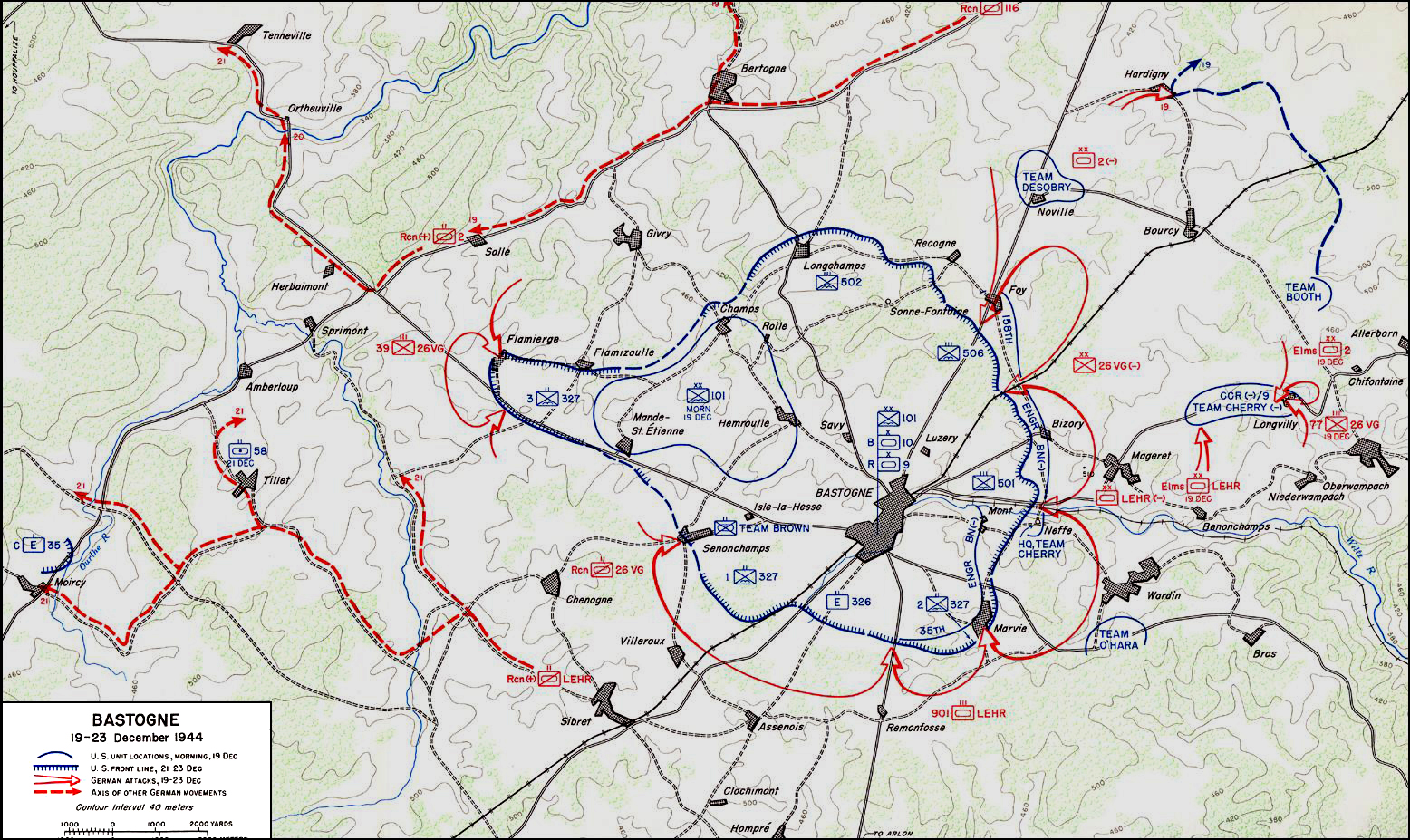| Just one of the views from the roads of the Belgian Ardennes. |
The Bastogne region is a special place. Cycling fans know it because it is host to La Doyenne, the old Liège-Bastogne-Liège race. Those who are familiar with a little WWII history know it for being the center of the action during the Battle of the Bulge. Nearly seventy years later, The War is still a raw memory in these parts. Even where we live, further to the southeast, the memorials to resistance fighters and liberators dot the landscape. The church in our town still bears the scars of mortars and bullets. Plaques are on every corner. The old synagogue behind our house no longer serves its original purpose. It is now rented out for meetings and special occasions. It doesn't take a history expert to figure out why. There's a picture in the museum a few streets over that shows our street in 1944. All it shows is one building and a pile of rubble. Ettelbruck likes to be known as Patton Town, in honor of the famous General who coordinated its liberation on Christmas Day 1944. There's a big statue erected in his honor just outside the city limits. All along the line, towns like Ettelbruck were hit hard during Hitler's last attempt to push back against the Allies moving towards Berlin. There doesn't seem to be any desire to forget that, nor the sacrifices made by allied soldiers and local resistance fighters.
 |
| The situation in Bastogne during Christmas 1944. |
| The massive Mardasson Memorial above Bastogne commemorates the besieged defenders who held the town despite heavy Nazi offense during Christmas 1944. |
The main historic site, the Mardasson Memorial Visitor Center, is currently closed for remodeling. The Memorial itself is still open for viewing. However, down in Bastogne itself there is a small but professionally designed exhibit called "I Was 20 in '45" presenting the perspectives of not just the combatants, but also of the civilians. The footage from the battle and aftermath is horrific. The recorded interviews of survivors are just as moving. I remember in particular an interview of an old woman siting in front of her house in a blue flowered dress, thick framed glasses are perched on her nose. She looks like just another Belgian grandmother. In a calm voice she is telling her memories of Christmas 1944. Her husband had gone off in the woods outside the town with his fellow resistance fighters. He was shot and killed somewhere along the way. Their house had been completely destroyed during one of the artillery attacks. So, she took her newborn and hid in the woods, without food or proper clothing. She hid there for days, almost completely frozen. Her child didn't survive.
As we were riding along the roads and trails, past the massive monument that towered above us on the hill, I couldn't help but think that the peaceful woods which we rolled through are still pockmarked with foxholes and bomb craters. Those pasture lands still hold battle debris and the personal effects of soldiers and civilians. It seems like a perfect place now, but there is still blood in this landscape. All along the way are street signs pointing to places like Noville, Bourcy, and Foy. There'd be a marker here, a fluttering American flag there, unexploded ordinance turned monument a few kilometers later.
I realized that 70 years really isn't that long and that this route we planned wasn't so perfect after all.
No comments:
Post a Comment